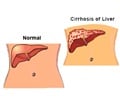
Cleveland reported online in Psychology of Addictive Behaviors that 8 percent of the incoming freshmen were heavy drinkers the summer before starting college. The researchers surveyed the students again during the fall semester and found 28 percent of the freshmen now drank heavily.The results of the study were based on a study of 1,275 high-risk matriculating college students originally conducted in 2006 by Rob Turrisi, professor of biobehavioral health.
Turrisi and his colleagues randomly assigned students to one of four intervention groups -- parent-based intervention only, peer-based intervention only, both parent- and peer-based intervention or no intervention -- and then surveyed the students on their drinking behaviors the summer before they entered college and then again during their first fall semester.
The parent-based intervention involved parents receiving a 35-page handbook outlining how to discuss the issue of alcohol and how to relate to their college student. Parents were asked to fill out an evaluation of the booklet, which also served as a measure to determine how many parents read the material. All parents completed the evaluations.
For peer-based intervention, subjects met one-on-one with a trained peer facilitator once within the first two weeks on campus. The meetings were 45 to 60 minutes long and included "perceived and actual descriptive norms for drinking, drinking consequences, alcoholic caloric consumption and hours of exercise required to burn those calories," the researchers report.All students included in the survey were former high school athletes, chosen because this group is considered at high risk for heavy alcohol use and its consequences, which include risky sex, driving drunk and personal injury or death.
In the new investigation, Cleveland and his colleagues approached the study differently. Rather than focusing on average levels of drinking -- peak blood alcohol content, drinks per weekend and drinks per week -- Cleveland reanalyzed the data using a person-centered approach to determine students’ patterns of drinking as well as how the students responded to intervention. This allowed the researchers to examine how drinking patterns varied throughout the week as well as how the interventions could be linked to students’ transitions from one sub-group to another."We found four sub-groups of drinkers, which is an important advance to understanding different types of drinking that were present in this college sample," said Cleveland.
Advertisement
Although neither intervention strategy appeared to influence the weekend drinkers, whether bingers or non-bingers, the intervention effects on the nondrinkers and heavy drinkers were promising, said Cleveland. "From here we may be able to tailor the intervention to different types of students, identifying those students who are at different types of risk," said Cleveland. "By figuring out a way to match the intervention to the individual you can also maximize your resources for intervention."Cleveland is continuing this work by replicating the results among another sample of college students and is also using the same methods to study the drinking behaviors of young adults who are not attending college.
Advertisement









